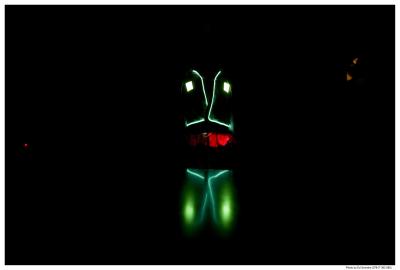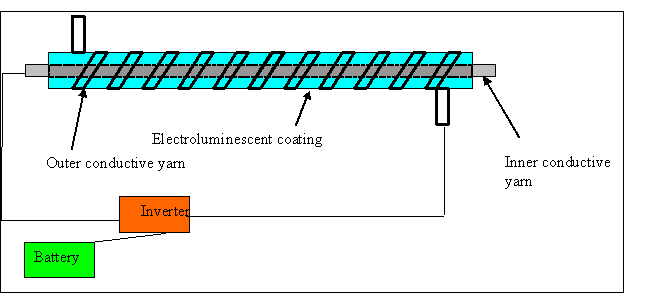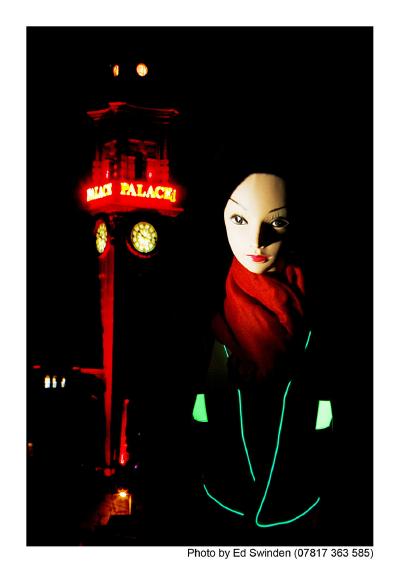Researchers at The University of Manchester have developed high-tech textile yarns that can be used to make clothing glow in the dark, ideal for late-night bicyclists and joggers.
Current high visibility products – such as those used by emergency services and highway maintenance workers – depend on external light sources to make them visible.
They can be ineffective in low light situations and require a light source from something like vehicle headlights to make them visible. This can lead to the wearer being seen too late.This new technology, made from electroluminescent (EL) yarns, allows the wearer to be permanently visible and therefore improves personal safety.

EL yarn emits light when powered by a battery. Its development has been based on thin film electroluminescent technology. The yarn consists of an inner conductive core yarn, coated with electroluminescent ink – which means it emits light when an electric current is passed through it – and a protective transparent encapsulation, with an outer conductive yarn wrapped around it.
When the EL yarn is powered with an inverter the resultant electrical field between the inner and outer conductor causes the electroluminescent coating to emit light. The emission of light occurs between the contact points between the outer yarn and the inner yarn.

Other potential applications for the yarn include flexible woven or knitted road safety signs that communicate written instructions.
Dr Tilak Dias, Head of the WLIC, said: “At the moment the EL yarn we have developed is less flexible than conventional yarns. But it is more flexible than current optical fibres that are incorporated within fabrics to provide illumination.

“EL yarn can be easily incorporated into a knitted or woven fabric and the resultant active illuminating fabric provides illumination when it is powered.
“The luminance of a single strand of the EL yarn is greater than that of photoluminescent glow yarns, which are currently used in some high visibility applications.
“Weaving or knitting the yarn in a particular manner, so that more yarn per unit area is achieved, improves the luminance of the EL yarn.”
- University of Manchester





Comments